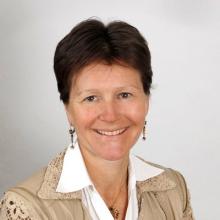
Established in January 2018 and led by international cement companies, the Global Cement & Concrete Association is dedicated to developing and strengthening the sector’s key contribution to sustainable construction.
It is also fostering innovation throughout the construction value chain in collaboration with industry associations as well as architects, engineers and innovators. Guy Woodford met the GCCA’s recently appointed chief executive, Benjamin Sporton, to find out more about the association’s goals.
While thoroughly enjoying the challenges as chief executive of the World Coal Association (WCA), Benjamin Sporton knew when approached about the possibility of becoming the Global Cement & Concrete Association’s (GCCA) first chief executive, that it was too good an opportunity to turn down.
“There was one number that always stuck in my mind when I was working in the coal sector and that was 1.1 billion of the world’s people are moving into cities over the next 15 years. So, when I was first approached about the GCCA job, I thought ‘that’s an awful lot of cement and concrete!’ You’re talking about the need for new infrastructure such as buildings, schools, hospitals and sanitation.
“We were doing work at the WCA looking at sustainable development goals [SDGs] and mapping the coal industry across those, and when I thought about mapping cement and concrete against SDGs, I thought it offered the complete picture. I heard some good stories about Latin America where just putting concrete floors in schools was helping kids learn. All the ways that cement and concrete can help develop the broader global sustainable development story really appealed to me.”
Sporton says a real need for one global voice for the cement and concrete industry had led to the creation of the GCCA. “Our job is to take all the fantastic work done at a national and regional industry and association level and discuss sustainable development and climate change issues with global organisations like the
“We will be looking at the role of concrete in construction of the future, tackling questions like how will the built environment change? And what sort of innovations in the concrete sector can help adapt to this change? We also need to fully understand the whole lifecycle contribution of concrete, including articulating the thermal mass benefits of concrete and the role of recarbonisation.”
Sporton is also keen to build on existing work on boosting global concrete and cement sector sustainability. A key part of this was recently taking over the work of the
“We will continue driving the work of the Cement Sustainability Initiative forward, but also take it in to the concrete sector,” says Sporton, adding, “The initiative’s guidelines around co-processing, health and safety, and the measuring of CO2 and the GNR (Getting the Numbers Right) database are real strengths to build on.”
At its inaugural annual general meeting and symposium held in London In November 2018, attended by the chief executives of more than 30 major global cement and concrete companies, the GCCA set out its priorities and work programme with the specific aim of strengthening the sector’s contribution to sustainable construction.
The GCCA work programme focuses on a number of priority areas, including: positioning concrete as the sustainable building material of choice; promoting international best practice in the areas of safety, production and the use of cement and concrete in the built environment; fostering innovation in the cement and concrete sectors; making a positive contribution to global sustainable development; promoting the principles of a circular economy across the value chain. Albert Manifold, chief executive of
The London gathering also confirmed the launch of a GCCA Sustainability Charter with reporting guidelines for safety, CO2 emissions, co-processing of waste, and water.
The cement and concrete industry symposium featured a range of renowned speakers leading a discussion on global trends in construction, with panellists Michael Birshan (McKinsey & Co), Elizabeth ‘Beth’ Heider (
“Symposiums are hugely important for two reasons. Firstly, they bring external perspectives to the industry. Beth Heider told us a lot about what customers expect looking forward over the next 20, 30, 40 years, and the impact that will have on us. Haiyan Wang looked at emerging economies’ impact on the sector, which is phenomenal in terms of the built environment – with 300 million people in India alone moving from the countryside into cities, some of which are brand new. Then we had Michael Birshan talking about industry challenges such as those centred on productivity.
“We had more than 30 CEOs of major cement and concrete companies in the room listening to these speakers and sharing ideas among themselves about what they can do to drive some of the sustainability issues forward, such as through best practice. As Beth Heider said during the symposium, ‘Collaboration is the new innovation’.”
Originally from Adelaide, South Australia, and having lived in the UK for the last decade, Sporton joined the London-headquartered World Coal Association (WCA) as its policy director in 2010, becoming its deputy chief executive two years later. Prior to his appointment as WCA chief executive in 2014, Sporton led the WCA’s strategic and business planning and was responsible for its policy and advocacy work, with a key focus on sustainable development and climate change issues.
After taking up the role of GCCA chief executive in October 2018, Sporton’s first few months in post will see him clocking up the miles in the air and on the ground, travelling all over the world meeting leading cement and concrete company chief executives and visiting some of their companies’ major production sites to gain a more detailed understanding of the sector’s challenges.
“We had a really good foundation set for us by the ten founding company members [CEMEX, CNBM, CRH,
“We’re getting the GCCA management team on board. Claude Loréa started as our Cement director in November and [Dr] Andrew Minson starts as our Concrete and
“Starting an organisation comes with all the big picture stuff, but you also have to be on top of all the nitty- gritty – like getting the GCCA’s bank account up and running!”
The GCCA has 32 member companies and nine affiliate organisations from across the world. It means the association already represents 35% of the world’s cement production. “We want to increase that to 50% in the next 12 to 18 months,” emphasises Sporton, who holds an honours degree in Politics from the University of Adelaide. “When they set up the GCCA, the ten founding member companies and organisations were very well spread. We had companies from India, China, the Americas, and Europe. What we need to do now is more around deepening the connections we have in those countries and regions.”
Asked about his leadership style, Sporton, who also studied at the University of Buenos Aires in Argentina and the Australian Institute of Management, responds: “I would describe myself as a team captain. The executive team we are forming is a team of experts. Claude [Loréa] and [Dr] Andrew [Minson] are exceptional technical experts on cement and concrete respectively, and we have Paul [Adeleke, communications & policy director] who is a highly experienced communications professional. We are a team that collaborates.”
Keen to gain more cement and concrete on-site production knowledge, Sporton and Adeleke recently visited
“We were accompanied by Tarmac’s Mike Eberlin, managing director – Cement & Lime, and some of the great team on site. It was a fantastic learning opportunity. We learnt a lot about the process of making cement and saw how the quarry worked. One of the things I was most fascinated by was some of the technology involved in cement production. We saw the bag-packing facility and it was all state-of-the-art stuff, watching bags coming off what was like a cylinder, being filled up and moved on to the next stage of the process. It was also interesting to learn how alternative fuels are being used on the site, which is reducing landfills.
“The people at Tunstead were passionate and committed; the average tenure of an employee is nearly 14 years. Tunstead really does work with the local community. They have people from the area serving apprenticeships and they host school visits. They also have quite a few people with degrees working there, so it’s a highly educated workforce. Quarrying and cement production is also seen as an interesting, challenging and exciting profession to work in. Ultimately, the people working there are helping to build the local hospital and other parts of the wider world. It is our role to tell that story.”








